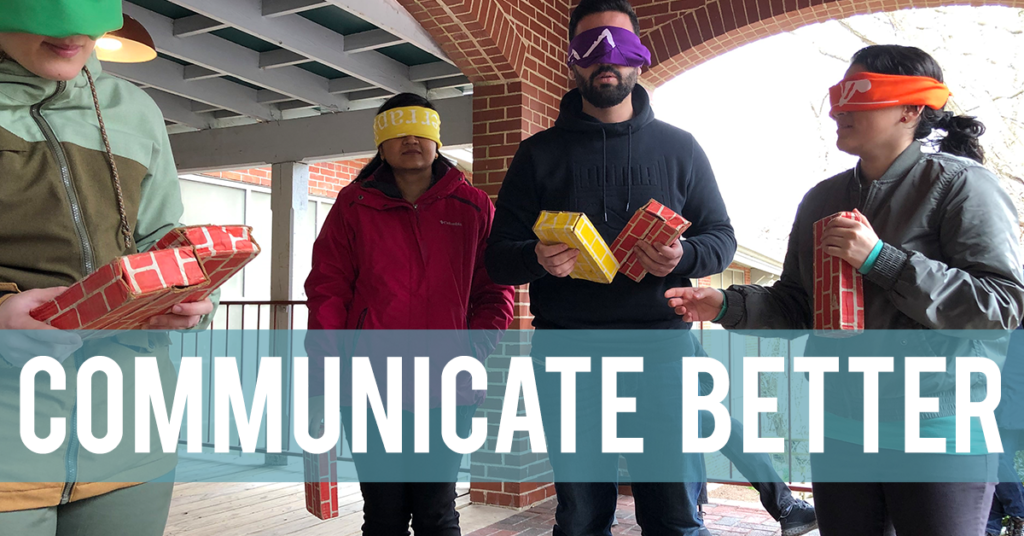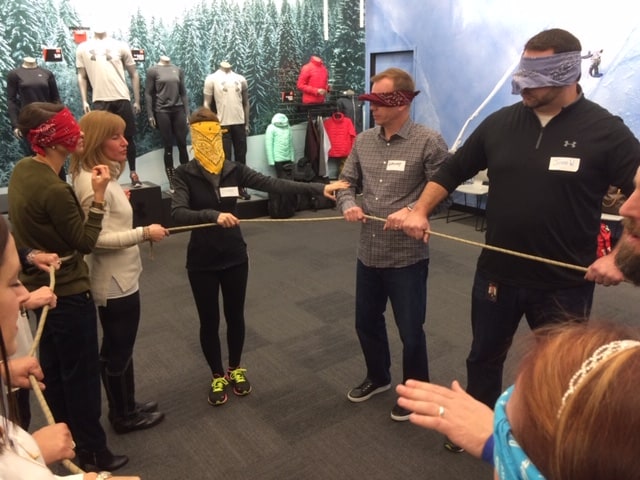
In The Power of Play (Part One), we discussed how play “has been found to speed up learning, enhance productivity and increase job satisfaction,” according to Lynn Barnett, a professor of recreation, sports and tourism at the University of Illinois at Urbana-Champaign. In Part Two of this blog series, we will explore how the concept of play can help us communicate better.
The Impact of Experiential Learning and Play
According to researcher Edgar Dale, adult learners generally remember…
- 10% of what they read
- 20% of what they hear
- 30% of what they see
- 50% of what the see and hear
- 70% of what they say and write
- 90% of what they say as they do
This is the whole idea behind the concept of experiential learning. As American psychologist, philosopher, and educational reformer John Dewey once famously said, “there is an intimate and necessary relation between the processes of actual experience and education.” Simply put, people learn better by doing. This is taken a step further when we add an element of fun – gamification.
“While play is crucial for a child’s development, it is also beneficial for people of all ages,” write Lawrence Robinson; Melinda Smith, M.A.; Jeanne Segal, Ph.D.; and Jennifer Shubin. “Play can add joy to life, relieve stress, supercharge learning, and connect you to others and the world around you.”
Team Building Pairs Experiential Learning and Play to Improve Communication
When you make learning fun, it can really help “enhance bonding and communication,” says Barnett, as well as improve subject matter retention. As Matt Baker, Chief Adventure Officer at Terrapin Adventures, puts it, “Fun is more memorable.” This is why the concept of play – gamification – is utilized in so many Team Building Programs.
A few of our favorite communication-focussed team building exercises include Group Juggle, Which It – Whose It, and Web Shapes. Each plays an important role as we work to break down communication barriers, build trust amongst participants, and ultimately improve individual and group communication skills.
Group Juggle: Timing & Packaging Matters
Michael Altshuler once said “The bad news is time flies. The good news is you’re the pilot.” This is important to remember when it comes to clear communication. Timing is everything and it is up to you – the communicator – to get the timing right. “If your audience is not paying attention, trying to communicate is wasting your breath. Wait until they are receptive and actually listening”, explained Baker.
Another important aspect of communication is packaging. Adjusting your message to your particular audience will increase your communication effectiveness. For example tall people like object up higher than low. Likewise, how you provide constructive feedback will impact a person’s receptiveness to your point. Group Juggle is all about “understanding the equal importance of timing and packaging of messages,” says Baker.
Web Shapes: Clear Communication
George Bernard Shaw once said, “The single biggest problem in communication is the illusion that it has taken place.” Sometimes, we are not always as clear as we think we are. This breakdown in communication can lead to confusion, decreased productivity, and even tension and conflict.
Web Shapes is designed to teach participants “to use the power of words,” says Baker, as your group is tasked to work together to make specific shapes out of rope or webbing. As you can imagine, clear communication is vital to the completion of this exercise. The importance of specificity, leadership, listening and collaboration are featured in this exercise.

Serious Team Building Partnered with Serious Fun!
Terrapin Adventures, conveniently located between Baltimore and Washington DC, is able to create a customized program to help improve trust, communication, engagement, collaboration, and problem solving. We can accommodate up to 200 people in a comfortable indoor setting or we can come to you! Indoor or outdoor, on-site or off.
Schedule Your Custom Team Building Program!
After each exercise, your group will sit down with their facilitator to discuss the lessons behind each activity and how they translate to the business world. This discussion is designed to reinforce these lessons and ensures that the progress made during your team building outing lasts long after you leave us.
If you have any questions, please call Terrapin Adventure at 301.725.1313, or email us at info@terrapinadventures.com to learn more.
Sources
- “Fun in Learning: Why Entertainment Is Essential for Adult Education.” Growth Engineering, 21 Dec. 2018, www.growthengineering.co.uk/why-fun-in-learning-is-important/.
- Garner, R. L. “Humor in Pedagogy: How Ha-Ha Can Lead to Aha!” Taylor & Francis, www.tandfonline.com/doi/abs/10.3200/CTCH.54.1.177-180#aHR0cHM6Ly93d3cudGFuZGZvbmxpbmUuY29tL2RvaS9wZGYvMTAuMzIwMC9DVENILjU0LjEuMTc3LTE4MD9uZWVkQWNjZXNzPXRydWVAQEAw.
- Robinson, Lawrence, et al. “The Benefits of Play for Adults.” HelpGuide.org, 21 Mar. 2019, www.helpguide.org/articles/mental-health/benefits-of-play-for-adults.htm/.
